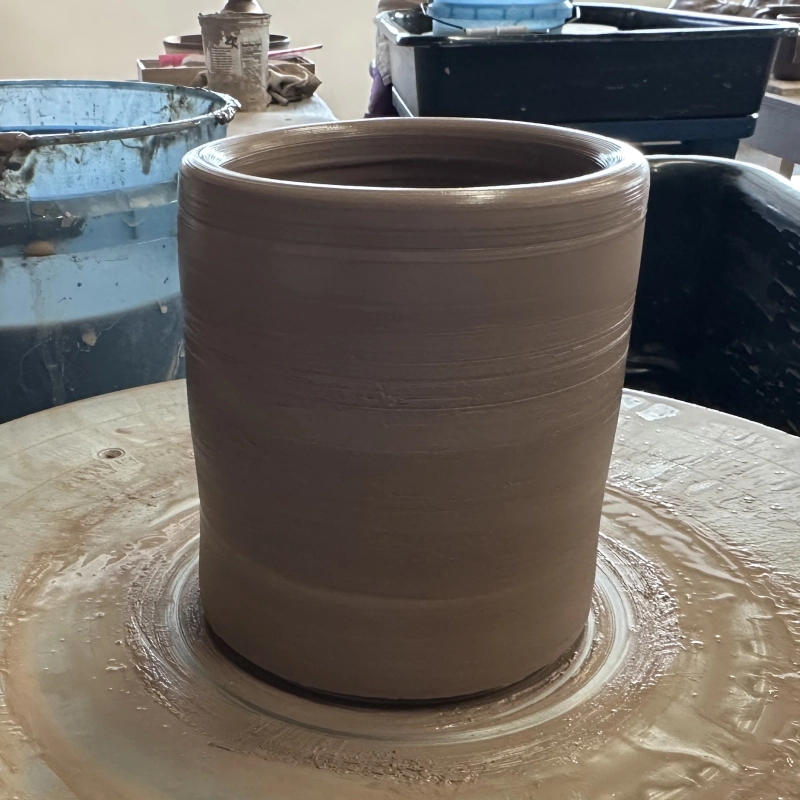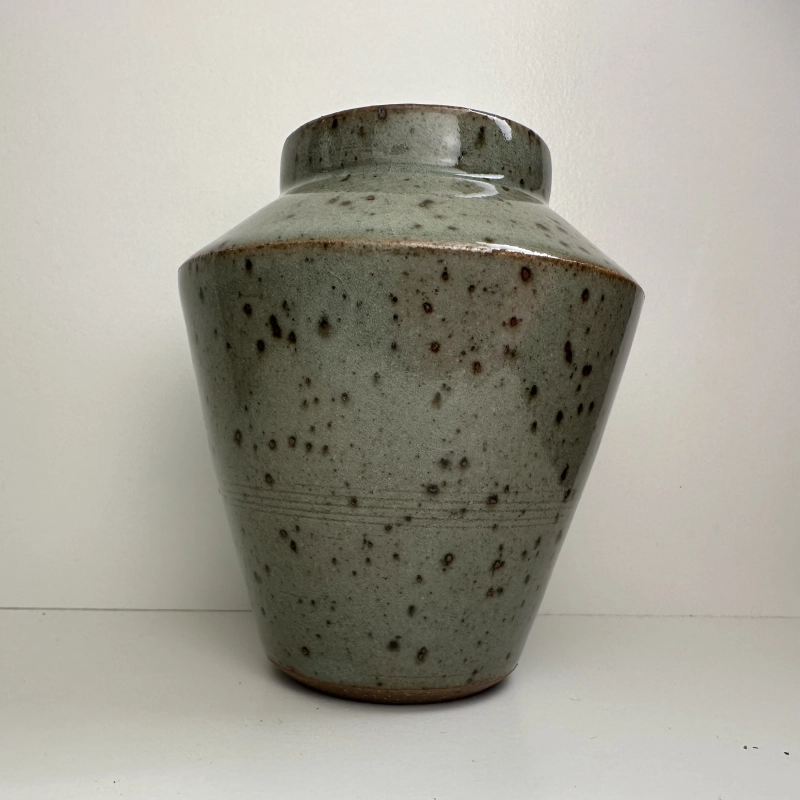A few months ago, I wrote a blog post about how woodworking classes helped me to examine my relationship with failure. Now that I’m wrapping up my second semester of ceramics classes at Mudflat Studios, I wanted to reflect on the experience. So this is the first of an indeterminate number of posts.

Week Two
One of my first cylinders that didn't collapse.

Month Six
After a few months, I started to explore my artistic voice.
Being Terrible at Something Is Wonderful
There was something special about the complete and abject failure of my first wheel-throwing class. I watched my instructor wedge clay1, but my hands refused to replicate what I observed. Despite some 1:1 coaching, I just couldn’t quite make it work. Then we moved on to centering, coning, and throwing cylinders – the most basic form. I am not exaggerating when I say that I attempted to throw 8 cylinders over the course of the next two hours. All of them collapsed. All of them. When I got home, I was in what you might call “The Red Zone”. I wasn’t sure if I was going to scream or cry or both. I felt behind. I felt awful. I felt like a failure.
But there’s a difference between being a failure and failing. Failure implies reaching the end of the line and quitting. Failing implies trying something and learning that it doesn’t work. How could I be a failure when I was just getting started? Learning takes time and failure is a very helpful teacher.
What I would discover (or more accurately, rediscover) is that there’s a special kind of joy in start something new, being just awful at it, and then building skill and expertise through time and practice. But my first class made two things clear: 1) it was hard to get 1:1 time with the instructor during class time and 2) sometimes I needed time alone to observe, process, practice, and build a mind-body connection when learning a new skill.
Lucky for me, I had worked at a company that built a platform for asynchronous learning at scale. I also completed a Master’s degree with a good amount of asynchronous, flipped-classroom learning. I had experience learning the basics of new things at my own pace and then focusing on refining skills with instructors and classmates during class time. But I’d need to figure out where to find my async materials. It didn’t take long to find a trove of videos on YouTube, covering all the basic skills I was struggling with, not to mention advanced techniques from master ceramicists.2
Being able to watch and re-watch videos was both enjoyable and transformative for my learning experience. The initial views at home prepared me to experiment in the studio. If I got stuck or needed a refresher, it was easy to pull up the videos on my phone3. It was also really helpful to watch videos from different instructors covering the same skills and concepts. As with many things, there are many ways of accomplishing the same goal and many ways of explaining the same technique. This approach worked much better for me than the classroom-first instruction. And it paid off.
Pretty quickly I found myself wedging, centering, and throwing basic forms with confidence. I was still failing, but it was in the context of experimentation. How wide can I throw this bowl? How thin should these walls be? What consistency of clay should I use for this vase versus that plate? I wouldn’t say that failing is fun all the time, but it sure can be rewarding when you learn from it.
Now when I think back to that first class, I wish that I had given myself a little more compassion. Still, I’m grateful to have had that experience, including the deep frustration. Natural talent is great, but working hard for something can be really rewarding.
For someone who is hunting for a job, this experience also reminded me that I’m capable of learning new things – and fast! I don’t need to be an expert in 100% of the job description requirements – what would be the fun in that?
As someone who was a manager of people (and hopes to be again some day), I think about how this experience will inform the ways in which I support my future teams and colleauges. Failing wasn’t easy when I was learning a new skill for pleasure, but my livelihood wasn’t depending on it. It can be terrifying when you make a mistake at work, but it doesn’t have to be. How then do we think about failing versus failure in the workplace? Do we punish failing? Is it celebrated? Do we learn from it? Does it inform how we learn or how we might learn (or teach) differently?
When was the last time you failed? What did you learn?4
Up Next
In my next post, I’ll reflect on experimentation and the cost of failure in my ceramics journey.
Footnotes
-
Wedging is the process of removing air bubbles and preparing your clay for wheel throwing or hand building. ↩
-
Florian Gadsby’s collection of videos have been incredibly helpful. He covers a lot of the basic techniques and also shows how he throws many of the forms that are his signature style. The angular forms have been a big inspiration and influence as I develop my own voice. ↩
-
Using one’s phone at the wheel is a risky proposition, given all the wet clay. ↩
-
Let me know in the comments! ↩